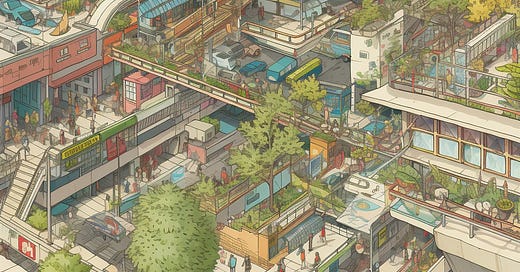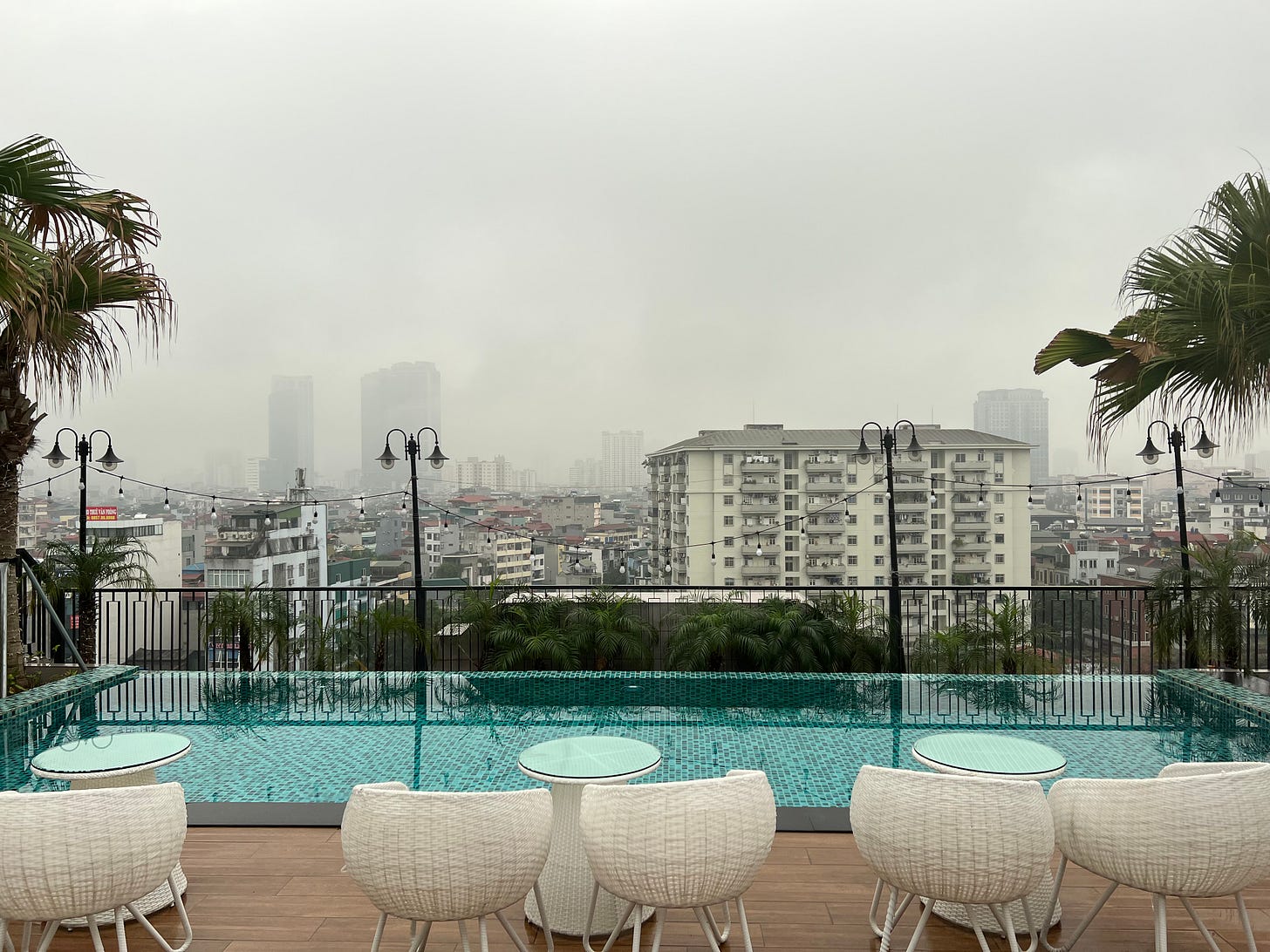Hello from London! I’ve just arrived here from the penultimate leg of my trip: Dubai. While the journey thus far has been far too short and not always relaxing, this impromptu circumnavigation has been nothing short of memorable.
I’ve now enacted the part of my trip plan that initially justified the timing of the voyage — being able to join my British cousins in Bangkok for their journey back to the UK, including a three-day layover in Dubai to see another of my cousins, who lives there with her husband and two kids.
Seeing cities as completely different as Ho Chi Minh, Hanoi, Bangkok, and Dubai in short succession taught me a lot about how urban environments work. For one, I learned how much a city's handling of traffic is tied to its level of economic advancement. Indeed, before a critical mass of citizens can afford a car, a city's streets will be ruled by a mayhem of mopeds, as in much of Vietnam. Then, as in Bangkok, the chaos eventually gives way to more orderly traffic, but bound by a new form of chaos: endless gridlock. Finally, as in Dubai, an ultra-wealthy city might respond with massive infrastructural upgrades, paving itself with 14-lane highways, but rendering getting by on foot untenable. Each way has its merits and flaws.
The trip also opened my eyes to what I find most beautiful in cities: creative manifestations of their 3-dimensionality. In Vietnam, storefronts spanned multiple floors, sometimes covering an entire high-rise with signage. In Bangkok, multi-story concrete spans built over the roadways served multiple purposes: pedestrian walkways, elevated train tracks, elevated highways, and perhaps most importantly, shade from the baking sun for the sidewalks below. And in Dubai, architects from all around the world have explored unexpected shapes and forms in massive megastructures.
But in each case I was saddened, as in every city I've been to, by what feels like a missed opportunity: a lack of coordinated vertical infrastructure, as almost every high-rise stands conspicuously alone, architecturally and structurally distinct from its neighbors. Why were we emboldened to plan cities as grids, but never took the step beyond to plan them as lattices? Why are bridges between buildings seen as a quirk, reserved largely for hospitals and frigid cities, and not a more regular phenomenon? Why must I descend twenty stories, cross a busy street, and ascend them again to visit my neighbor across the way?
I believe a step towards a more unified vertical cityscape will come through an emphasis on the roofscape. Many of my fondest memories are on city rooftops — Brooklyn house parties, cocktails at swanky Manhattan hotels, or drinks overlooking the St. Laurent in Montréal. The trip I'm on has also reaffirmed that rooftops are my happy place.
Let’s take it from the experts of urban navigation. It's on a city's rooftops that those at the bleeding edge of connecting urban landscapes — Parkour athletes — spend their time and paint their masterpieces.
Let's open our roofscapes — to gardens, greenhouses, and parks; to hiking trails, ski slopes, and climbing walls; to fountains, aqueducts, and public pools; to restaurants, bars, and night markets; to outdoor theaters, sculpture parks, and ice rinks. Then it will be truly irresistible to escape the canyons below, and instead connect the beautiful city above.
While I feel such hope writing these words, I also know such ambitious public coordination might be too much to wish for in some legislatively gridlocked countries I won’t name. So perhaps this recommendation is for the more flexibly constituted nations of this world. To those innovative countries that find it possible to switch their entire currency to crypto, banish archaic voting rules from their systems, or, yes, build entire cities from scratch, here is my plea: reinvent the building code. Turn it into a Turing-complete code for building great things. Invite and incentivize new vertical connection points. Make elevators and steel lattices a public utility for dwellings, skyways, and commercial hubs to be draped over and interlinked. And hide the bland glass and concrete below a lush, inter-connected canopy almost indistinguishable from a beautiful countryside landscape.







